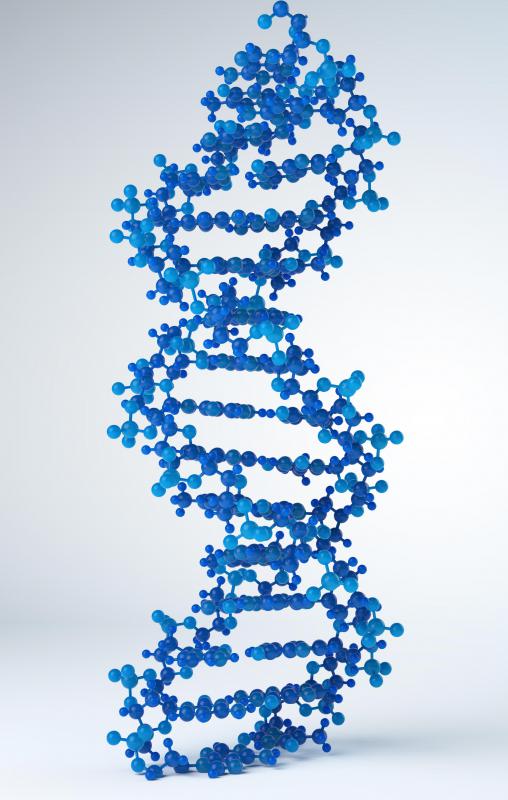At WiseGEEK, we're committed to delivering accurate, trustworthy information. Our expert-authored content is rigorously fact-checked and sourced from credible authorities. Discover how we uphold the highest standards in providing you with reliable knowledge.
What Is RNA Polymerase II?
Ribonucleic acid (RNA) polymerase II starts the transcription process that copies DNA by binding to part of a gene. A polymerase is an enzyme that acts as a catalyst in the formation of new DNA and RNA from an existing strand of DNA or RNA. RNA polymerase II (RNAP II) transcribes all molecules of messenger ribonucleic acid (mRNA) within a cell. It is also known as Poll II.
RNA polymerase II initiates a chemical reaction. It works by first opening a section of a DNA molecule. It then unwinds and pulls apart the DNA double helix, splitting it into two strands in a manner similar to unzipping a zipper. Then the polymerase allows for transcription, or copying, of all of the mRNA molecules inside a cell.

Nucleotides can be compared to the teeth of a zipper. With the two DNA strands separated, a new strand of RNA begins to form as RNA polymerase II matches complementary nucleotides to one strand of the DNA, thus creating an RNA strand that mimics the other DNA strand. The result can be likened to an RNA-DNA zipper. The newly formed RNA strand is then “unzipped” from the DNA strand, and it exits the polymerase. The DNA strands rejoin, and the polymerase continues moves along the length of the DNA strand, repeating this process.

The process is sometimes disrupted. Viruses that alter gene expression often do so by shutting off the transcription process of RNA polymerase II. The influenza virus, for instance, has been found to inhibit and destroy this particular polymerase in some cases.
One of several types of macromolecules, RNA polymerase II is actually a large complex made of 10 different protein sub-units. It transcribes messenger RNAs and several small nuclear RNAs. This is just one of several types of polymerases.

RNA polymerase II differs from RNA polymerase III, whose function is mostly to regulate cell growth. Another important differentiation is that DNA polymerases cannot initiate a new strand, but an RNA polymerase can. An RNA-binding protein (RBP) can be a key factor in controlling and regulating RNA polymerase II.
More than one type of RNA is translated using a polymerase. Messenger RNA (mRNA) is translated into a polypeptide. RNA polymerase II is used to transcribe transfer RNA (tRNA), which carries amino acids to the growing polypeptide. It also is used to transcribe ribosomal RNA (rRNA), which is used to build a cell’s ribosomes.
AS FEATURED ON:
AS FEATURED ON:














Discuss this Article
Post your comments